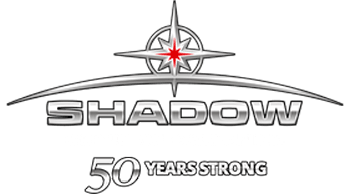Efficiently transporting containers from docks to doorsteps requires careful planning, secure handling, and reliable delivery routes. This process, known as transloading transportation, ensures your goods are moved seamlessly from one mode of transport to another, ultimately arriving safely at their destination.
At Shadow Group, we specialize in making this process smooth and efficient for businesses of all sizes.
Here’s a 4-step breakdown of how transloading transportation works and the key considerations to keep in mind.
Step 1: Efficient Dockside Handling
The journey begins at the port, where containers are unloaded from ships, and proper dockside handling is essential to avoid delays and prevent damage to goods. Each container undergoes a thorough inspection to ensure it meets transport requirements, while accurate documentation streamlines customs clearance and reduces the risk of delays.
Utilizing advanced equipment and skilled operators, containers are carefully unloaded to ensure goods remain intact and secure throughout the process.
Step 2: Transloading and Consolidation
Once at the dock, goods are transloaded—shifted from ocean containers to transport vehicles like trucks or railcars. This step is essential for adapting to different shipping methods and optimizing the delivery process.
- Consolidation and Deconsolidation
Depending on the size and destination of the orders, goods may be consolidated into fewer vehicles for efficiency or deconsolidated into smaller shipments. - Secure Loading
Proper loading techniques, such as strategic placement and strapping, prevent damage during transport. This is particularly important for fragile or high-value items.
Step 3: Route Planning and Transportation
Once loaded, your goods embark on their journey to the final destination, guided by effective route planning to ensure timely delivery and cost efficiency.
Shadow Group leverages advanced logistics tools to identify the fastest and safest routes, considering traffic patterns, road conditions, and regulatory requirements. To provide peace of mind throughout the process, real-time tracking keeps you informed of your shipment’s progress at every step.
Step 4: Last-Mile Delivery
The final leg of the journey, known as last-mile delivery, is often the most challenging, involving the transportation of goods from regional hubs to doorsteps. Partnering with local warehouses ensures faster and more efficient delivery, while tailored services like scheduled drop-offs or special handling are designed to meet customer-specific requirements and ensure satisfaction.
Key Considerations for Successful Transloading Transportation
- Secure Handling – Ensure that your logistics partner prioritizes secure loading and unloading practices to minimize the risk of damage.
- Efficient Communication – Clear communication between all parties—dock operators, drivers, and customers—is vital for a seamless operation.
- Regulatory Compliance – Adhering to customs and transportation regulations prevents delays and ensures a smooth process.
- Technology Integration – Advanced tracking and route optimization tools are critical for reliable and transparent service.
Why Choose Shadow Group for Transloading Transportation?
With years of experience and a commitment to excellence, our team at Shadow Group provides professional transloading transportation services that businesses can rely on. From dockside handling to last-mile delivery, we ensure your goods are transported securely, efficiently, and on time.
At Shadow Group, we don’t just move your containers—we provide peace of mind. Let us handle the logistics while you focus on growing your business.
Get in touch with us today!
